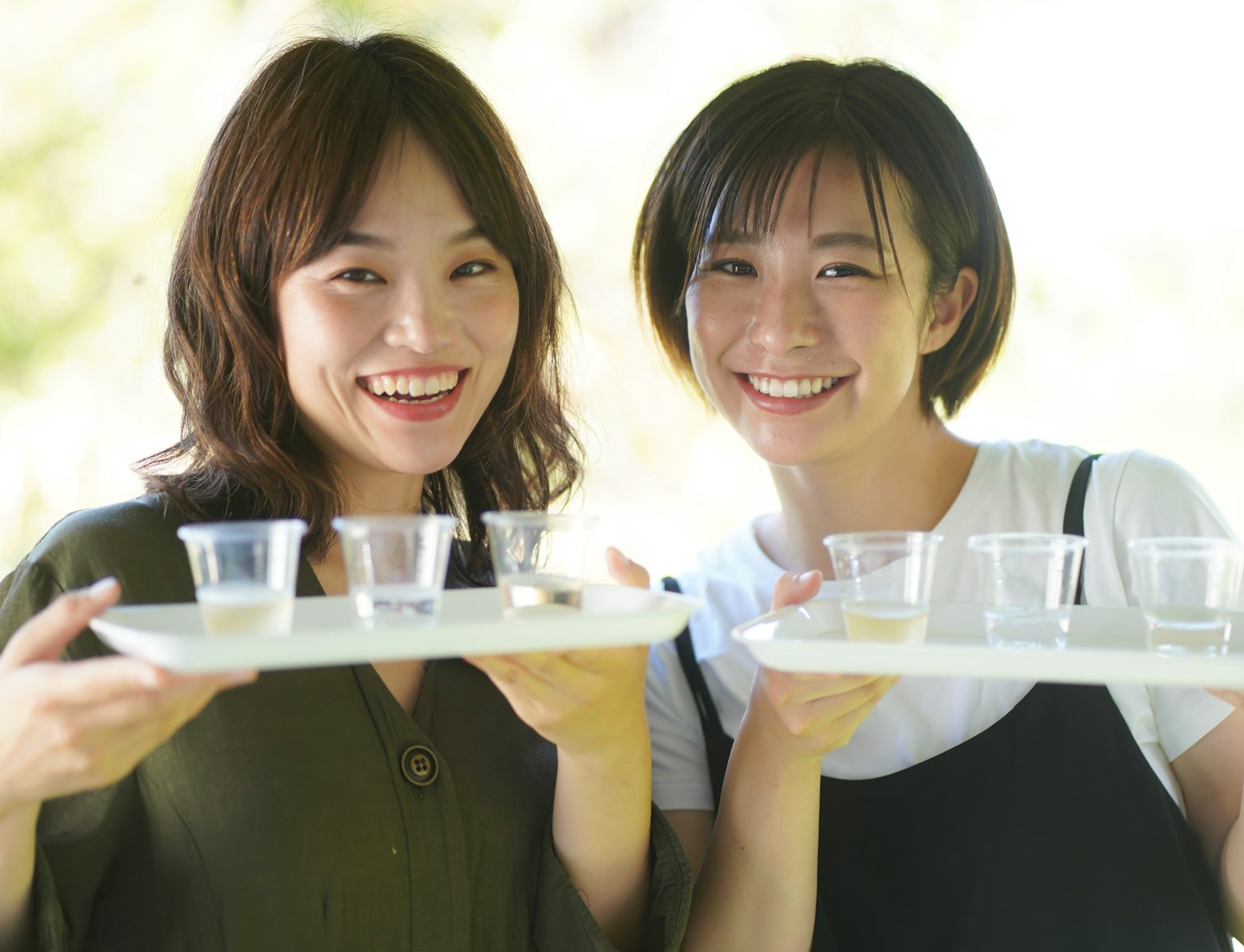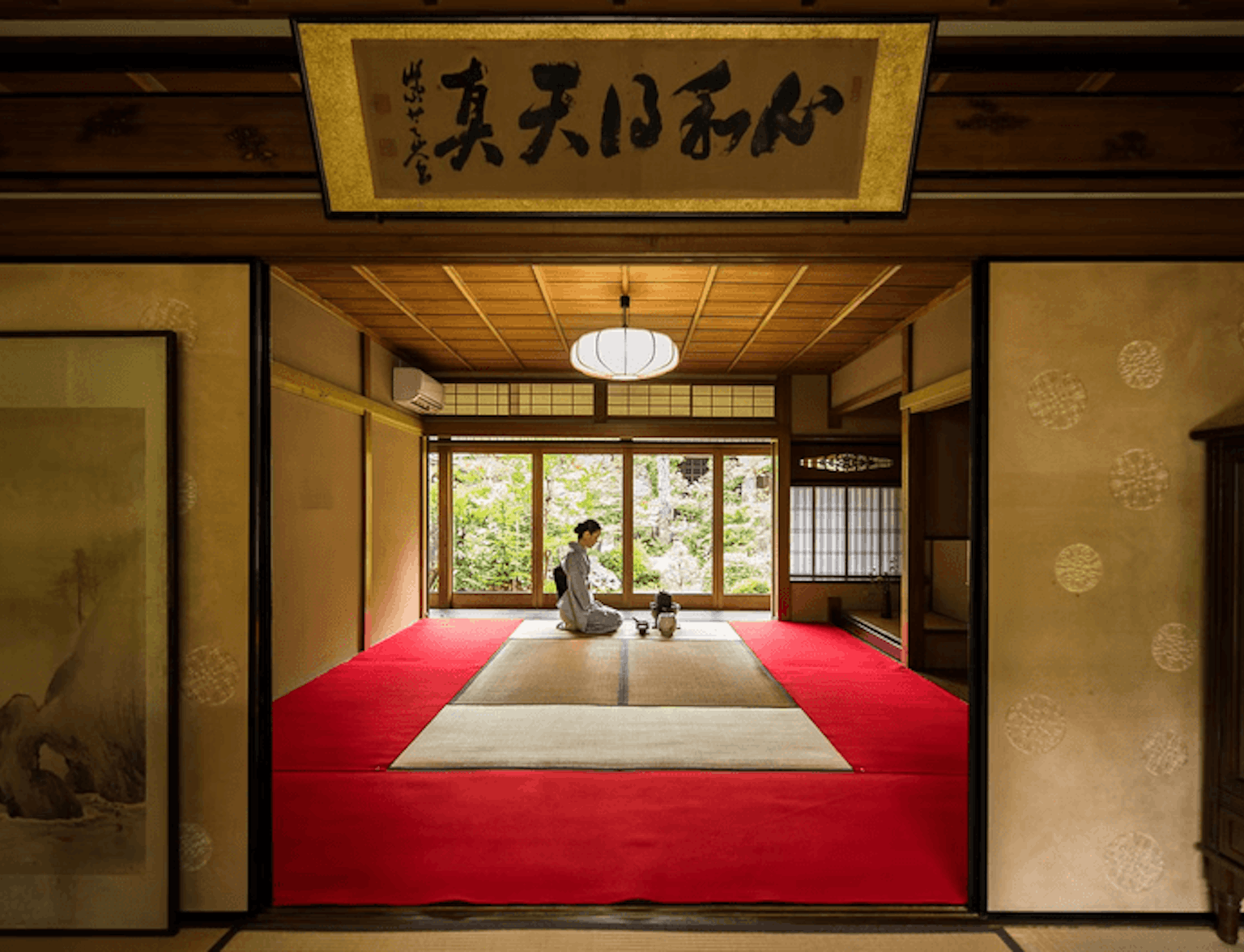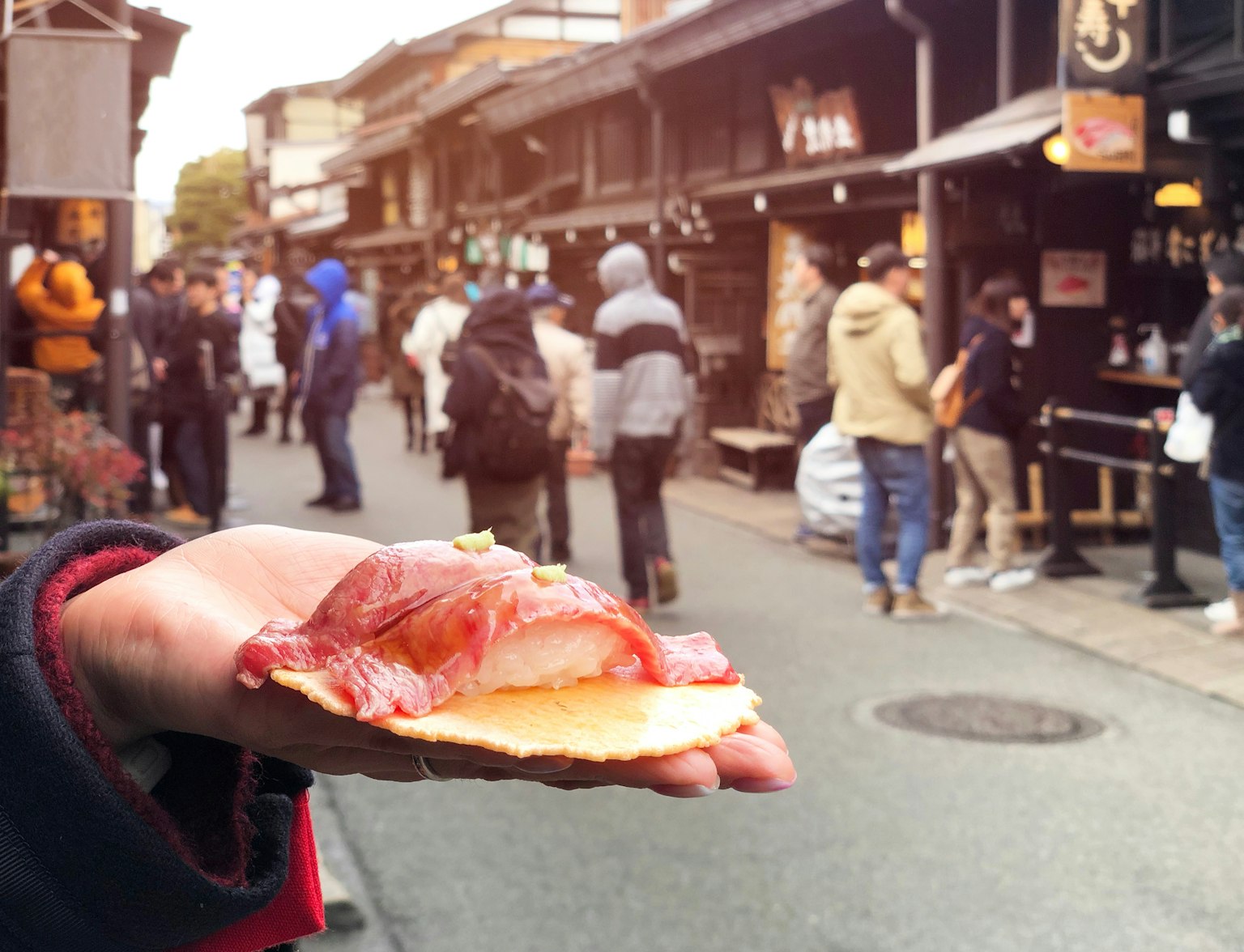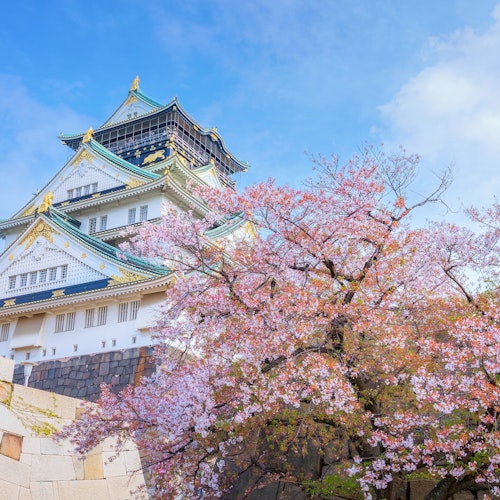

Imagine sitting in a cozy Japanese izakaya, surrounded by the enticing aroma of freshly grilled yakitori and the gentle hum of conversations around you. Or perhaps you're strolling through a bustling market in Tokyo, surrounded by a plethora of mouth-watering street food options. The Japanese culinary scene is as diverse as it is delicious, offering unforgettable experiences that captivate your senses and create lasting memories.
But how do you make the most of these experiences when you don't speak the language? Fear not, intrepid food lover! This comprehensive guide will help you navigate the intricacies of Japanese dining etiquette, master basic Japanese phrases for ordering food, and ensure you can confidently explore regional specialties and communicate your dietary needs.
So grab your chopsticks and prepare your taste buds, as we embark on a journey to unlock the secrets of ordering delicious food flawlessly in Japanese. With the knowledge you'll gain from this guide, you'll savor not only exquisite dishes but also forge meaningful connections with locals through the universal language of food.
Embarking on a culinary journey through Japan is an adventure that tantalizes the taste buds and immerses you in the rich cultural tapestry of the country. Japanese dining experiences are unique and diverse, ranging from casual eateries to upscale establishments. Regardless of the setting, understanding the nuances of Japanese dining etiquette and the variety of restaurant types will help you make the most of your gastronomic explorations.

As you step into a Japanese restaurant, you'll be greeted with a chorus of warm "いらっしゃいませ" (Irasshaimase) or "Welcome!" from the staff. This enthusiastic greeting sets the tone for your dining experience. Respond with a nod and a smile, and show your respect with a slight bow as you enter and exit the establishment.
In Japan, politeness is an essential aspect of daily life, and this extends to the dining scene. When speaking with restaurant staff, use polite language and phrases such as "すみません" (Sumimasen) or "Excuse me" to get their attention and "ありがとうございます" (Arigatou gozaimasu) or "Thank you very much" to express gratitude. Pay attention to the customs and courtesies around you, and follow suit to ensure you're respecting Japanese dining etiquette.

Dining in a traditional Japanese restaurant may involve sitting on tatami mats with low tables. As you step onto the tatami, remove your shoes and place them neatly to the side. Take your seat on the cushion provided, either cross-legged or in the seiza position, with your legs tucked beneath you. Observe the seating order, especially when dining with a group, as the most senior or respected person, should be seated first.
Izakayas are Japanese-style pubs offering a relaxed and lively atmosphere, perfect for unwinding with friends or colleagues. These establishments serve a variety of small dishes, known as "おつまみ" (otsumami), which are meant to be shared among the group. Pair your food with a selection of alcoholic beverages, including sake, shochu, and beer. Izakayas are a fantastic way to experience authentic Japanese drinking culture and savor delectable dishes in a convivial setting.

Experience izakaya in Nara.
If you're seeking a quick and satisfying meal, ramen shops and sushi bars are the way to go. Ramen shops offer steaming bowls of noodle soup with a variety of toppings, while sushi bars present an array of fresh sushi crafted by skilled chefs. In both settings, you'll often find counter seating, allowing you to watch your meal being prepared right before your eyes. Remember to eat your ramen while the noodles are still firm, and enjoy each piece of sushi in one bite to fully appreciate the harmonious blend of flavors.
Navigating the Japanese culinary landscape becomes much easier once you've mastered a few key phrases for ordering food. By learning these essential phrases, you'll be able to communicate your preferences, seek recommendations, and confidently place your order.

When you first sit down, you may be handed a menu in Japanese. To ask for an English menu, simply say, "英語のメニューがありますか?" (Eigo no menyū ga arimasu ka?), which means "Do you have an English menu?" Many restaurants in Japan, especially in tourist areas, will have an English menu available to accommodate international visitors.
If an English menu isn't available, don't worry! Many Japanese restaurants have picture menus or plastic food replicas on display, which can help you understand the dishes available. You can also look for "定食" (teishoku) or set meal options, which typically include a main dish, rice, miso soup, and pickles. Point to the dish you'd like to order and say "これをお願いします" (Kore o onegaishimasu), meaning "This one, please."

If you're unsure what to order, it's always a good idea to ask for recommendations. To do this, you can say "おすすめは何ですか?" (Osusume wa nan desu ka?), which translates to "What do you recommend?" This will often lead to the server suggesting popular or seasonal dishes that showcase the restaurant's specialty.
Japan has a strong focus on seasonal ingredients, and each region boasts its own unique cuisine. To inquire about regional specialties or seasonal dishes, ask "この地域の特産料理は何ですか?" (Kono chiiki no tokusan ryouri wa nan desu ka?), meaning "What are the local specialties?" or "季節の料理は何ですか?" (Kisetsu no ryouri wa nan desu ka?), which translates to "What are the seasonal dishes?"

When ordering, use polite language to show respect. For example, if you'd like to order a dish called "katsudon," say "カツ丼を一つお願いします" (Katsudon o hitotsu onegaishimasu), which means "One katsudon, please." The phrase "お願いします" (onegaishimasu) is a polite way to say "please" and should be used when placing your order.
If you'd like to customize your dish, such as adjusting the spice level or requesting a substitution, you can use phrases like "辛くないでください" (Karaku nai de kudasai), meaning "Please make it not spicy," or "野菜を多めにお願いします" (Yasai o ōme ni onegaishimasu), which translates to "Please add extra vegetables." Keep in mind that not all restaurants may accommodate customization requests, but it's always worth asking.
Understanding how to communicate your dietary restrictions and preferences is crucial to ensure an enjoyable dining experience in Japan. With a little preparation and knowledge of key phrases, you can successfully navigate Japanese cuisine while catering to your specific dietary needs.

To express that you're vegetarian, you can say "私は菜食主義者です" (Watashi wa saishoku shugisha desu), which means "I am a vegetarian." For vegans, use the phrase "私はビーガンです" (Watashi wa bīgan desu) or "I am a vegan." It's important to note that vegetarianism and veganism are not as common in Japan, so you may need to further clarify your dietary needs. For example, "肉と魚を食べません" (Niku to sakana o tabemasen) means "I don't eat meat and fish."
To convey that you need gluten-free food, say "グルテンフリーの食べ物が必要です" (Gurutenfurī no tabemono ga hitsuyō desu) or "I need gluten-free food." Keep in mind that awareness of gluten-free diets is still relatively limited in Japan, so you may need to explain your needs in more detail.
To ask if a dish contains a specific ingredient, use the phrase "〜は入っていますか?" (~wa haitte imasu ka?). For example, to ask if a dish contains eggs, say "卵は入っていますか?" (Tamago wa haitte imasu ka?), which means "Does this contain eggs?"
To inform the staff of your allergies, use the phrase "私は〜にアレルギーがあります" (Watashi wa ~ ni arerugī ga arimasu) or "I am allergic to ." Replace the "" with the specific allergen. For example, "私は落花生にアレルギーがあります" (Watashi wa rakkasei ni arerugī ga arimasu) means "I am allergic to peanuts."
Some Japanese dishes may contain hidden ingredients, such as fish broth (dashi) or soy sauce, which could be problematic for those with dietary restrictions or allergies. Research common ingredients and familiarize yourself with potential pitfalls in Japanese cuisine to help avoid any issues.
In larger cities, you'll find an increasing number of restaurants catering to vegetarian, vegan, and gluten-free diets. Look for specialized restaurants or those with clear dietary labels on their menus to ensure a worry-free dining experience.
Japanese drinking culture offers a fascinating insight into the nation's social customs and traditions. From the refined world of sake to the convivial atmosphere of izakayas, experiencing the local drinking culture is an essential part of any culinary adventure in Japan.

Sake, or Japanese rice wine, is a quintessential part of Japanese drinking culture. Enjoyed either warm or chilled, sake comes in various grades and flavors. When ordering, ask for "日本酒" (Nihonshu) to specify sake. Shochu, a distilled spirit typically made from sweet potatoes, rice, or barley, can be enjoyed straight or mixed with water, soda, or fruit juice. Finally, Japanese whiskey has gained international acclaim for its quality and craftsmanship, with many award-winning distilleries to explore.

Deepen your understanding of sake in Tokyo.
In Japan, it's customary to pour drinks for your companions. When you receive a glass, hold it with both hands and allow the other person to pour. When pouring for someone else, use two hands as well. Before taking your first sip, it's customary to toast with "乾杯" (Kanpai), which means "cheers" or "bottoms up." It's considered impolite to begin drinking before everyone has a filled glass and has joined in the toast.
Tea plays an integral role in Japanese culture, and there are many varieties to explore, such as green tea, matcha, roasted barley tea (mugicha), and brown rice tea (genmaicha). Tea ceremonies, known as "茶道" (Sadō) or "茶の湯" (Chanoyu), showcase the art of tea preparation and the philosophy of mindfulness, making them a must-experience aspect of Japanese culture.

Learn how a traditional tea ceremony is conducted.
If you prefer non-alcoholic beverages, there are plenty of options to choose from, such as "ラムネ" (Ramune), a popular carbonated soft drink, "カルピス" (Calpis), a sweet, yogurt-flavored drink, and various fruit juices. In restaurants and izakayas, you can also order "お茶割り" (Ocha-wari), which is green tea mixed with water or "ソーダ割り" (Sōda-wari), a mix of soda water and fruit juice.
Understanding the proper etiquette for paying the bill and expressing gratitude in Japan is essential to ensure a smooth and enjoyable dining experience. By familiarizing yourself with these customs, you'll be able to confidently navigate Japanese restaurants and leave a positive impression on the staff and your fellow diners.
When you're ready to pay, you can ask for the bill by saying "お会計お願いします" (O-kaikei onegaishimasu), which means "Check, please." In some restaurants, you may need to bring the bill to the cashier near the entrance, while in others, the server will bring it to your table.
Tipping is not customary in Japan, and in many cases, it can be considered impolite. Instead, Japanese service staff are generally paid a fair wage, and excellent service is expected as part of the dining experience. If you feel the need to express your gratitude for exceptional service, a heartfelt "ありがとう" (Arigatou) or "thank you" will suffice.

When leaving a restaurant, it's polite to say "ごちそうさまでした" (Gochisousama deshita), which is a way of expressing gratitude for the meal. This phrase is used to show appreciation for the food and the effort put into preparing it.
As you exit the restaurant, you may also hear the staff say "お帰りなさい" (Okaerinasai) or "お気をつけて" (Oki o tsukete), which mean "Welcome back" and "Take care," respectively. It's polite to respond with a slight bow and a smile as you leave.
By understanding the customs surrounding paying the bill and showing appreciation in Japan, you'll be able to seamlessly navigate the dining experience and leave a lasting impression on those around you. This, in turn, will enhance your overall enjoyment of Japan's diverse culinary landscape.
To truly appreciate the diverse and captivating world of Japanese cuisine, it's vital to familiarize yourself with the customs, etiquette, and essential phrases that govern the dining experience. By mastering these aspects, you'll be well-prepared to fully embrace the gastronomic delights Japan has to offer. Beyond merely satisfying your taste buds, this culinary journey enables you to forge genuine connections with the locals, gain insights into their traditions, and create memories that will last a lifetime.
So, as you venture into the fascinating realm of Japanese food, remember that each meal serves as a gateway to a deeper understanding of this extraordinary culture and a unique opportunity to enrich your personal journey.

Have a taste of Takayama's local delicacies.



